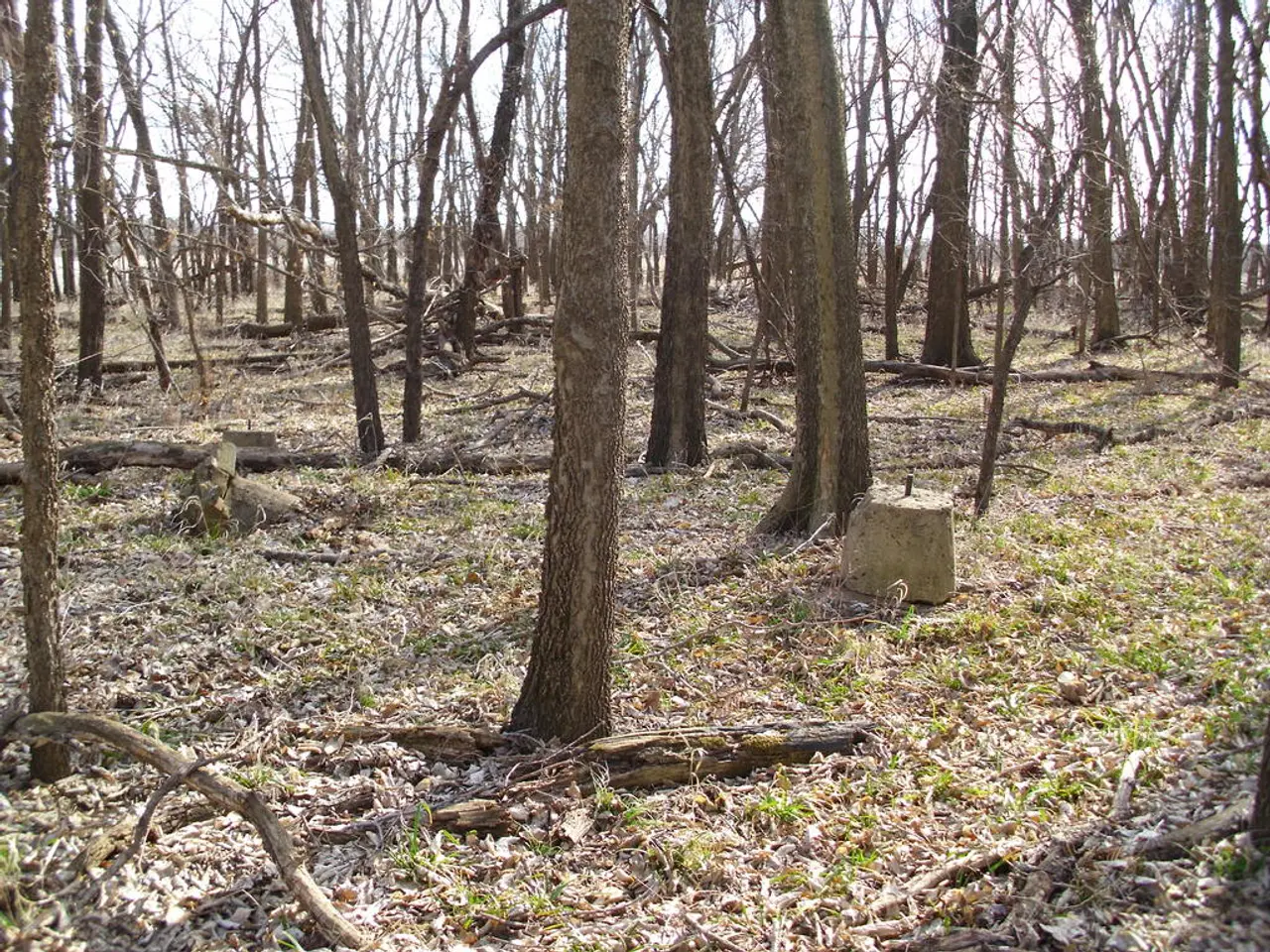Forest Carbon Absorption in Europe Decreasing: Is Reversal Possible?
In a recent study published in Nature, it has been reported that Europe's forest carbon sink is weakening, with the continent's forests absorbing less carbon dioxide than they did a decade ago [1][2][3][4]. The decline is primarily attributed to human pressures such as logging, conversion of forests to agriculture or pasture, and climate-related stresses, including extreme weather and insect outbreaks.
The study highlights several key causes:
- Logging and forest land conversion: The conversion of forest areas into cropland, pasture, and grass/shrubland significantly reduces the forests' carbon uptake capacity [3][4].
- Climate change impacts: Increasing extreme weather events and insect attacks weaken forest health and resilience, causing declines in carbon absorption [1].
- Inefficient monitoring: Many countries rely on infrequent forest inventories, unable to keep pace with rapid forest health changes [1].
To reverse this trend, the study recommends several solutions:
- Rapid carbon emissions reductions: To minimize climate stress on forests [1].
- Improved forest management strategies: Aimed at enhancing forest resilience to climate impacts and disturbances [1].
- Comprehensive, improved monitoring: Including better measurement of carbon flows between soil, vegetation, and the atmosphere, plus modeling of extreme weather effects on carbon sinks [1].
- Addressing forest land use changes: Minimizing deforestation and promoting afforestation and reforestation efforts to restore carbon sequestration capacity [4].
The study emphasizes the importance of integrated policies that address both climate and environmental goals to prevent the forest carbon sink's decline. The EU's forest carbon sink is expected to contribute to climate neutrality by 2050, but this requires efforts to prevent its decline.
The EU Climate Law, LULUCF Regulation, Nature Restoration Regulation, Carbon Removals and Carbon Farming, EU Biodiversity Strategy for 2030, and New EU Forest strategy for 2030 are potentially relevant to the proposed actions. The EU can potentially reverse the decline of its forest carbon sink by implementing timely regulations and incentives for sustainable practices.
The study also identifies several knowledge gaps in monitoring and modeling Europe's forests, including the need for more precise and timely measurement of carbon fluxes, refining predictions of extreme weather events, and improving understanding of forest resilience and biodiversity. There is a need to improve the understanding of how biodiversity, resilience, and forest management interact with each other.
In conclusion, addressing the decline in Europe's forest carbon sink requires bold, science-based actions focusing on both climate mitigation and adaptive management of forest ecosystems to restore Europe’s forest carbon sink and support its climate goals [1]. Climate change is making heatwaves and droughts more frequent, which reduces tree growth and increases disruptive events such as insect outbreaks, wildfires, and tree mortality. The EU must act now to prevent the further decline of its forest carbon sink and secure a sustainable future for its forests.
[1] Nature, 2023. "Europe's forest carbon sink is weakening." [Online]. Available: https://www.nature.com/articles/s41586-023-05455-9 [2] European Environmental Agency, 2023. "Europe's forests are absorbing less carbon dioxide." [Online]. Available: https://www.eea.europa.eu/highlights/europe-s-forests-are-absorbing-less [3] European Forest Institute, 2023. "Why is Europe's forest carbon sink declining?" [Online]. Available: https://www.efi.int/knowledge/publications/why-europe-s-forest-carbon-sink-declining [4] European Commission, 2023. "Action plan to reverse the decline in Europe's forest carbon sink." [Online]. Available: https://ec.europa.eu/clima/policies/land/forests/index_en.htm
- The study implies that improvements in data collection and environmental-science research, particularly on carbon fluxes and extreme weather predictions, could aid in preventing the decline of Europe's forest carbon sink [1].
- Scientific advancements in health-and-wellness, climate change, and mental-health research may provide insights into developing resilient forest ecosystems that can cope with the impacts of climate change and promote biodiversity [1].
- It is imperative for policymakers to integrate the EU Biodiversity Strategy for 2030 and New EU Forest strategy for 2030 to foster biodiversity and enhance the carbon sequestration capacity of Europe's forests [1].
- As excessive logging and land conversion continue to diminish European forests' carbon uptake capacity, there is a need for increased emphasis on health-and-wellness practices that support sustainable forest management [3].




